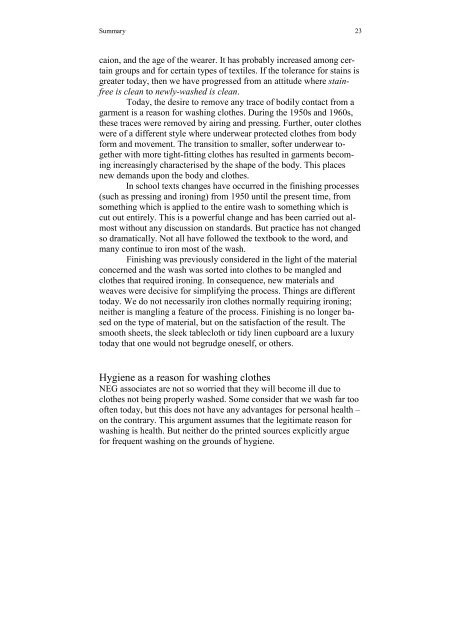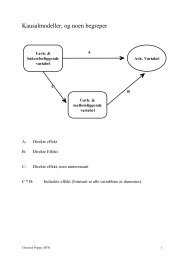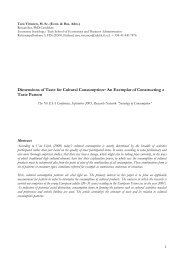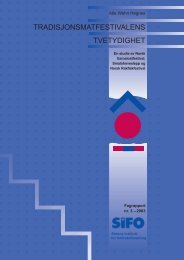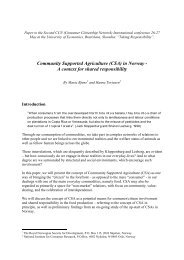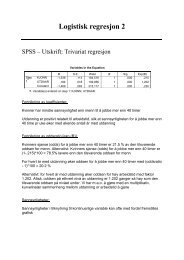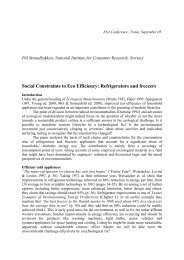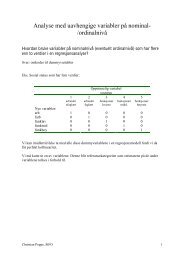You also want an ePaper? Increase the reach of your titles
YUMPU automatically turns print PDFs into web optimized ePapers that Google loves.
Summary 23<br />
caion, and the age of the wearer. It has probably increased among certain<br />
groups and for certain types of tex<strong>til</strong>es. If the tolerance for stains is<br />
greater today, then we have progressed from an attitude where stainfree<br />
is clean to newly-washed is clean.<br />
Today, the desire to remove any trace of bodily contact from a<br />
garment is a reason for washing clothes. During the 1950s and 1960s,<br />
these traces were removed by airing and pressing. Further, outer clothes<br />
were of a diffe<strong>rent</strong> style where underwear protected clothes from body<br />
form and movement. The transition to smaller, softer underwear together<br />
with more tight-fitting clothes has resulted in garments becoming<br />
increasingly characterised by the shape of the body. This places<br />
new demands upon the body and clothes.<br />
In school texts changes have occurred in the finishing processes<br />
(such as pressing and ironing) from 1950 un<strong>til</strong> the present time, from<br />
something which is applied to the entire wash to something which is<br />
cut out entirely. This is a powerful change and has been carried out almost<br />
without any discussion on standards. But practice has not changed<br />
so dramatically. Not all have followed the textbook to the word, and<br />
many continue to iron most of the wash.<br />
Finishing was previously considered in the light of the material<br />
concerned and the wash was sorted into clothes to be mangled and<br />
clothes that required ironing. In consequence, new materials and<br />
weaves were decisive for simplifying the process. Things are diffe<strong>rent</strong><br />
today. We do not necessarily iron clothes normally requiring ironing;<br />
neither is mangling a feature of the process. Finishing is no longer based<br />
on the type of material, but on the satisfaction of the result. The<br />
smooth sheets, the sleek tablecloth or tidy linen cupboard are a luxury<br />
today that one would not begrudge oneself, or others.<br />
Hygiene as a reason for washing clothes<br />
NEG associates are not so worried that they will become ill due to<br />
clothes not being properly washed. Some consider that we wash far too<br />
often today, but this does not have any advantages for personal health –<br />
on the contrary. This argument assumes that the legitimate reason for<br />
washing is health. But neither do the printed sources explicitly argue<br />
for frequent washing on the grounds of hygiene.


